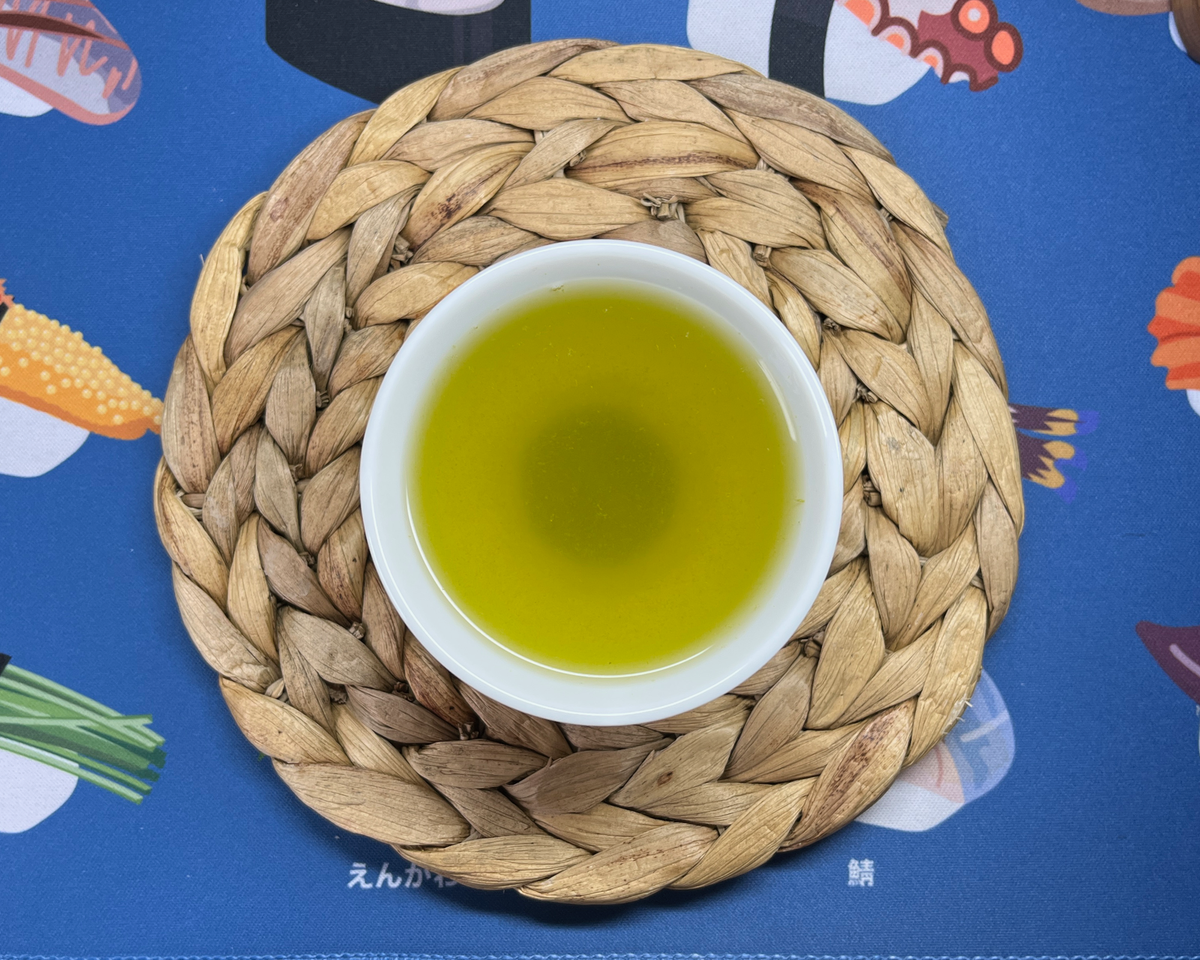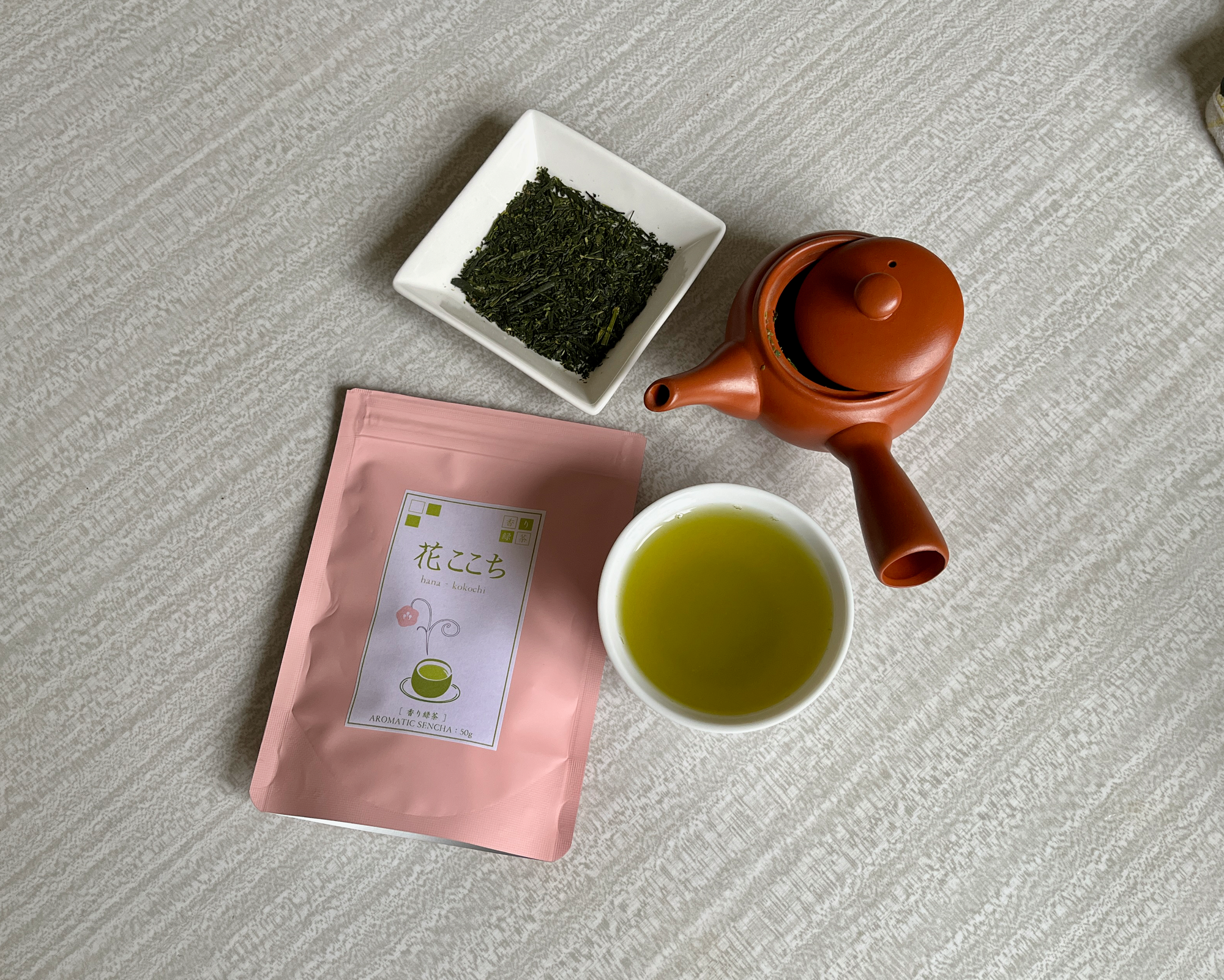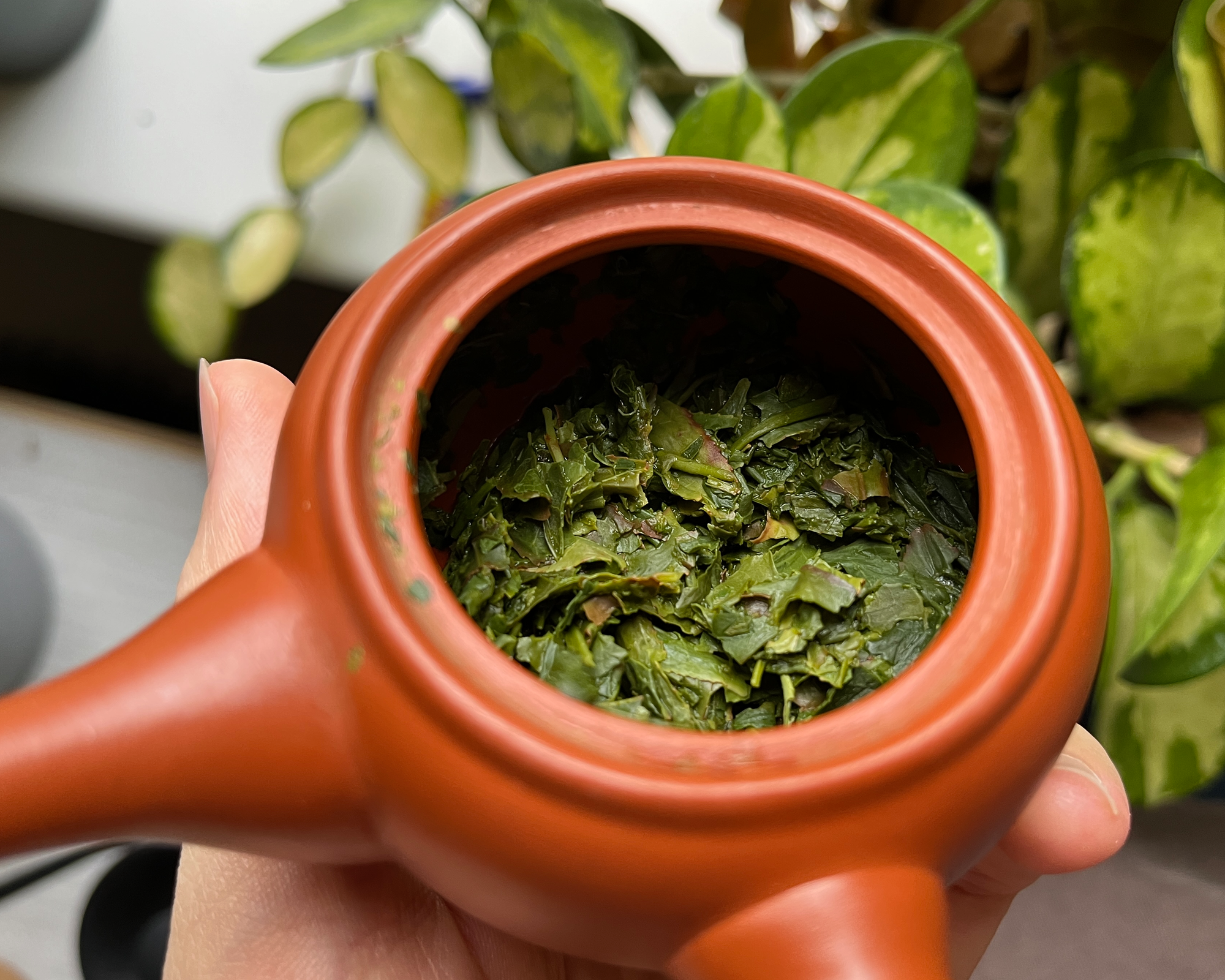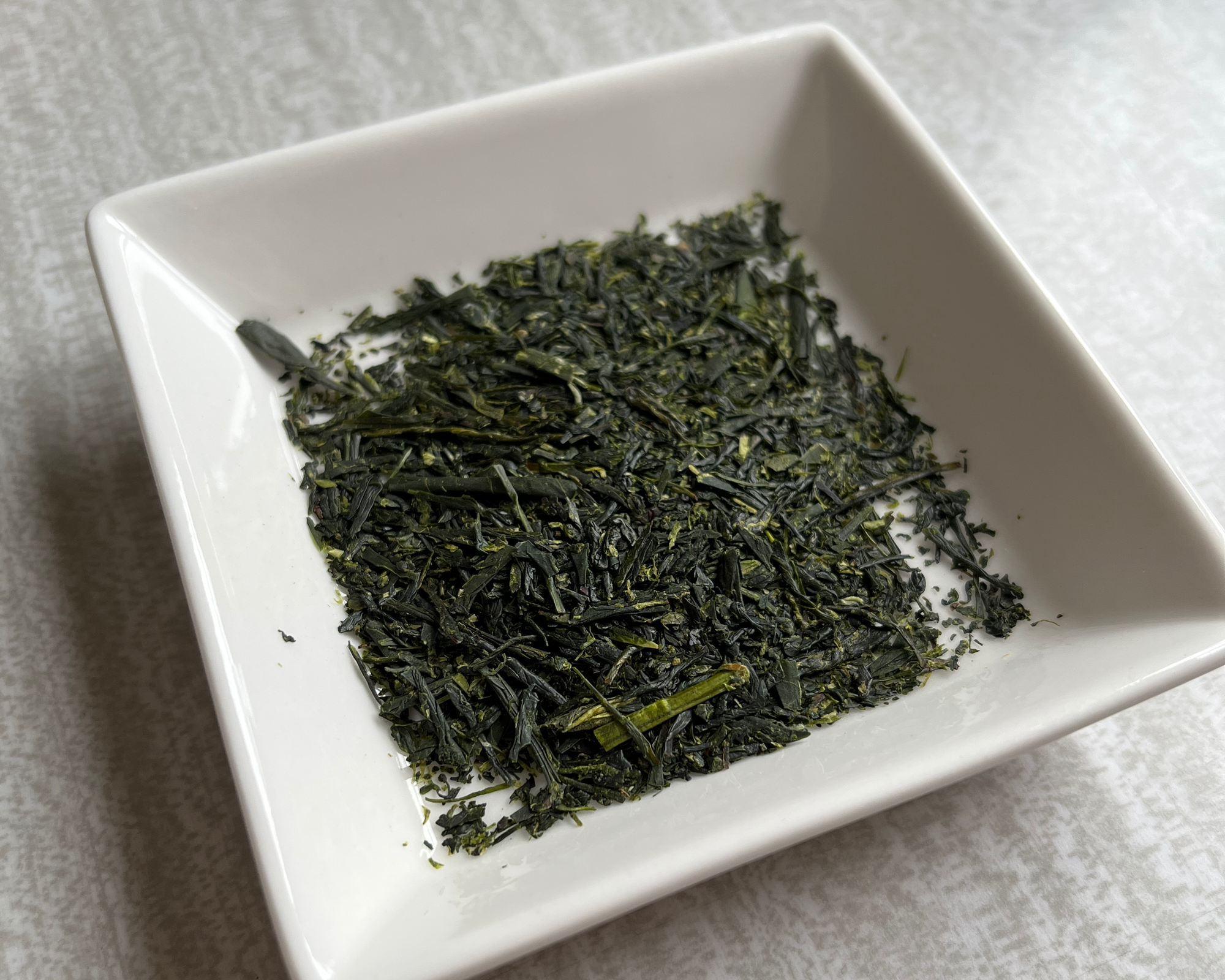Kaori Sencha - Samurai tea farm and Katsumata Kaitaku Tea Cooperative
I assisted to an event trough the GJTA with a farmer that helped develop a new kind of Sencha. Aromatic Sencha.

This week, I participated in the meet the farmer event from the Global Japanese Tea Association. With the farmer, we enjoyed two teas, a Sencha from the cooperative and a black tea from Yamamoto’s-san own farm. Today I want to brew the Sencha again, as it is a particular process and development behind it.
Morihiko Yamamoto-san is farmer located in Makinohara, Shizuoka. Close to Suruga Bay. He is the 5th generation from the Samurai tea farm 牧之原山本園, which was established in 1869. His ancestors were retainers of the Tokugawa shogunate. With the Meiji restoration, part of these retainers developed part of the Makinohara plateau for tea production. He currently manages around 2.2 hectares. His speciality is black and Oolong teas, with a focus on the production of aromatic teas.
Yamamoto-san is also a member of the Katsumata Kaitaku Tea Cooperative 勝間田開拓茶農協, established after World War II in 1946, in the area that used to be the Oi naval air force base. The cooperative includes around 17 farmers, and their speciality is the production of deep-steamed tea, fukamushicha. The cooperative manages approximately 33 hectares of fields, operating a big factory where they helped develop and process a new kind of tea, Aromatic Sencha. The production of this tea has some particular requirements that the cooperative assembled in their factory. The machine necessary to consistently produce this tea is unique in Japan today.

Aromatic Sencha 香り煎茶 - 花ここち
Japanese green tea has an emphasis on the umami of the tea. Sometimes this umami experience on the tea can be overwhelming for some people. A tea research station started a project to develop more aromatic-focused teas around 10 years ago. After 5 years of research, they opened up the investigation. Then, asked tea farmers in the area to help produce teas following the results of this investigation.
This research station is close to Makinohara, and Yamamoto-san volunteered to produce this new type of tea. On his farm, he emphasises the aroma of tea and applies this philosophy to his own teas, like black and oolongs. Like in his roasted Wakoucha ほうじ香り紅茶, which we also brewed during the event, but that one is for another occasion.
This Aromatic Sencha is produced in the cooperative factory under Yamamoto and the other tea cooperative members with the support of the tea research centre.
Most of the processing is similar to the usual green tea production. For this particular Sencha, and to develop the aroma, the leaves are withered before the steaming process is performed. Usually, you would start the production with the leafs as fresh as possible to give the umami and freshness the main stage in the final liquor.
The leaves are withered for around 16 hours. Then moved and shaken around every 2 hours to trigger the defensive mechanisms of the leaves. One of the main factors for the development of aroma in the leaves. To preserve the colour of the leaves withering is carried at a controlled 16C°. This way, the colour shift due to oxidation in Oolongs and black teas does not happen. Another difference to the Oolong process is that they are usually pan-fired. This aromatic sencha is processed using the steaming method.

The dry leaves have a hint of rose and plum blossom. Personally, it has a smell similar to pickled leaves, like Shiso leaves or pickled cherry blossoms, positively. As for the flavour, it was fruity and had a fresh aroma and hints of rose as well. Interestingly the texture and sweetness were more like a lightly oxidised Oolong but still present with gentle umami, making it a round experience.

In this particular tea, two cultivars are used, Asatusyu あさつゆ and Tsuyuhikari つゆひかり. These were selected for their natural sweetness and bright green colour for the Asatuyu. And for its fresh, delicate floral aroma and colour as well for the Tsuyuhikari, with a round umami to balance the tea.
—
You can find a whole article about Asatuyu here. Tsuyuhikari is a cultivar developed in Shizuoka with Asatuyu and Yabukita as their genetic material. Mostly found in Shizuoka and only available through tea nurseries 😉 with a special license agreement with the Shizuoka prefecture, holder of the rights until 2028. More on that in another post, eventually.
—
The research for this aromatic tea continues, and some other farms have started producing it. Although in small quantities due to the specifics needed to whiter the tea consistently. Currently, the Katsumata Kaitaku Tea Cooperative has the only machine able to produce at scale and consistently wither the tea leaves.
According to Yamamoto-san, the reception has been great for this tea as it offers a new look into Sencha, more focused on aroma than umami. This is also assisted by the fact that this tea is recommended to be prepared at higher temperatures, around 90-95°C, for maximum aroma release. This, in my opinion, is a great way to release pressure from customers that usually do not use lower temperatures for some green teas. And thus creating a better experience for them.

On the other hand, there is some division among wholesalers. Some see this development as an opportunity, while others see complications to market or use in their products, both as a standalone product or blend component. Let’s remember that the industry tends to focus predominantly on umami. And the evaluation system for these more fruity, floral teas could be considered a negative trait from the processing. Precisely because some withering has occurred, impacting the “freshness” of the tea.
In the old days, tea production and transport were slow, so it was not uncommon for the tea to whiter naturally due to the waiting times in tea production. You can read more about this in The story of Japanese tea by Tyas Sōsen.
As we can see, it is a complex situation, but people see this as an opportunity to create product differentiation. I agree with Tyas that this gives us insight into what tea could have been before production became so efficient and the natural withering disappeared. And would add that it does so while offering something new, evolving the methodologies and creating new values than just preservation of traditional methods.
This tea helps break the mould of what tea is “supposed to be”. While providing a better experience for most consumers thanks to a better performance at higher temperatures. And also reinforces the more established processing methods, offering variation for farms to market their teas and appeal to new and more customers.
